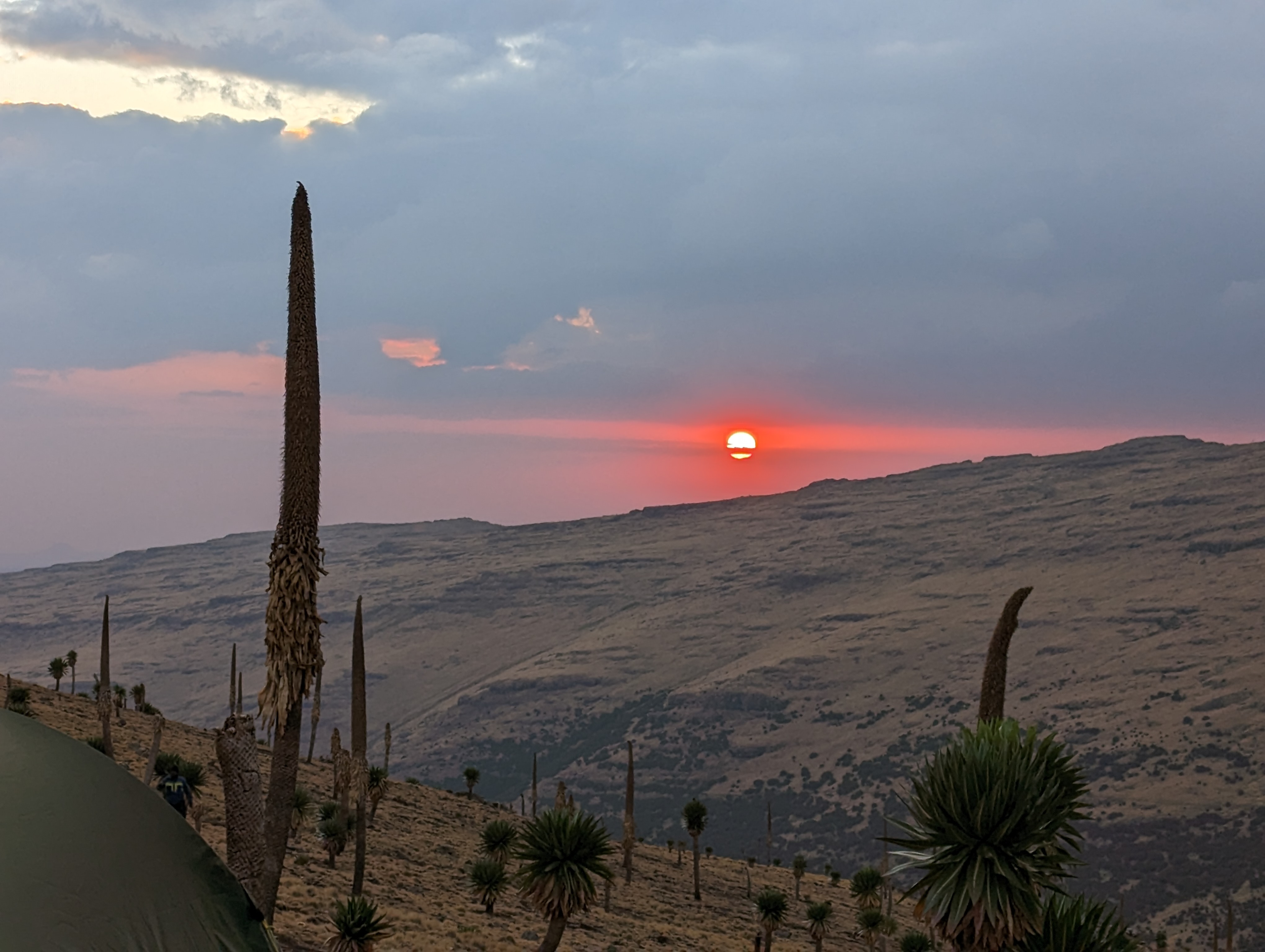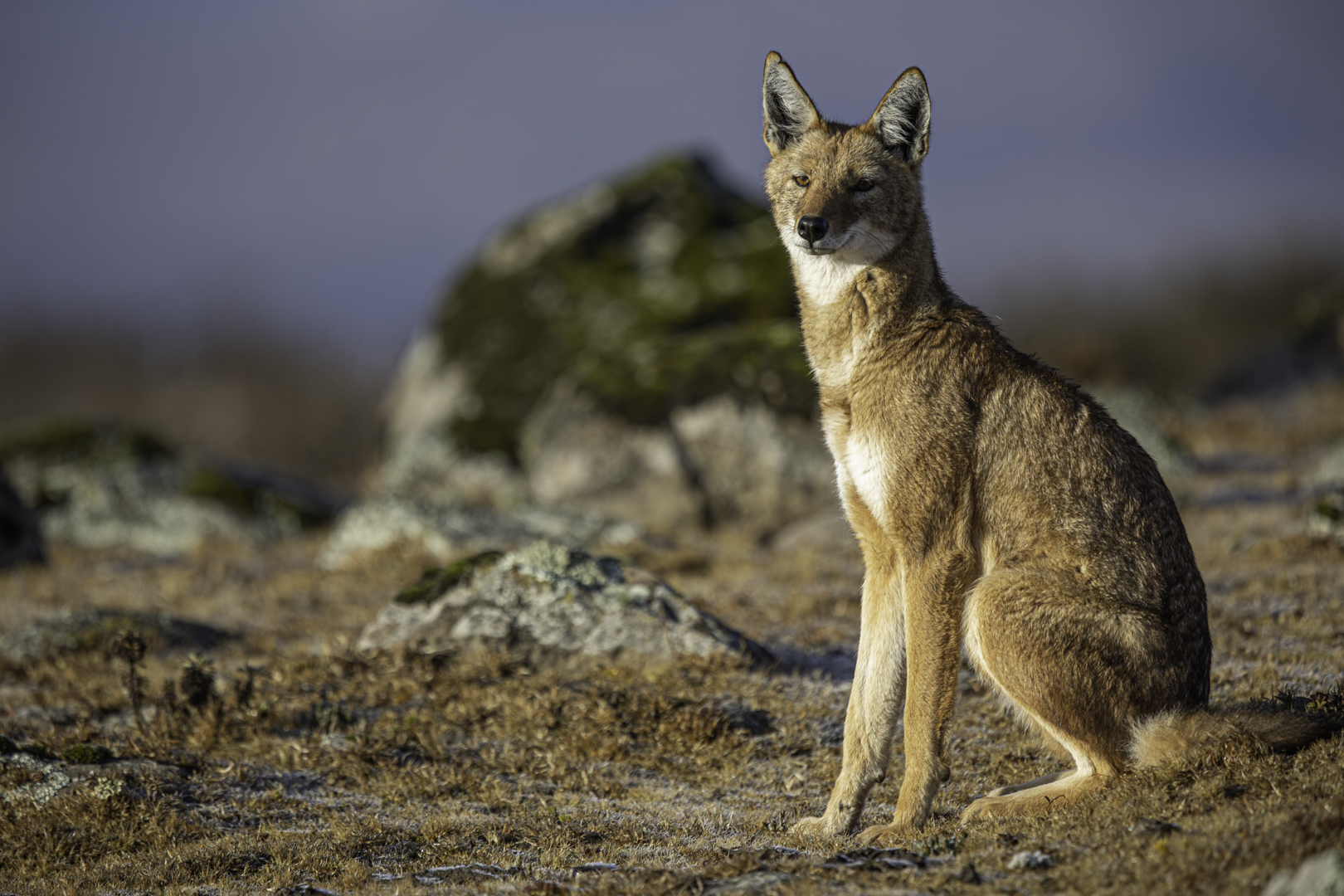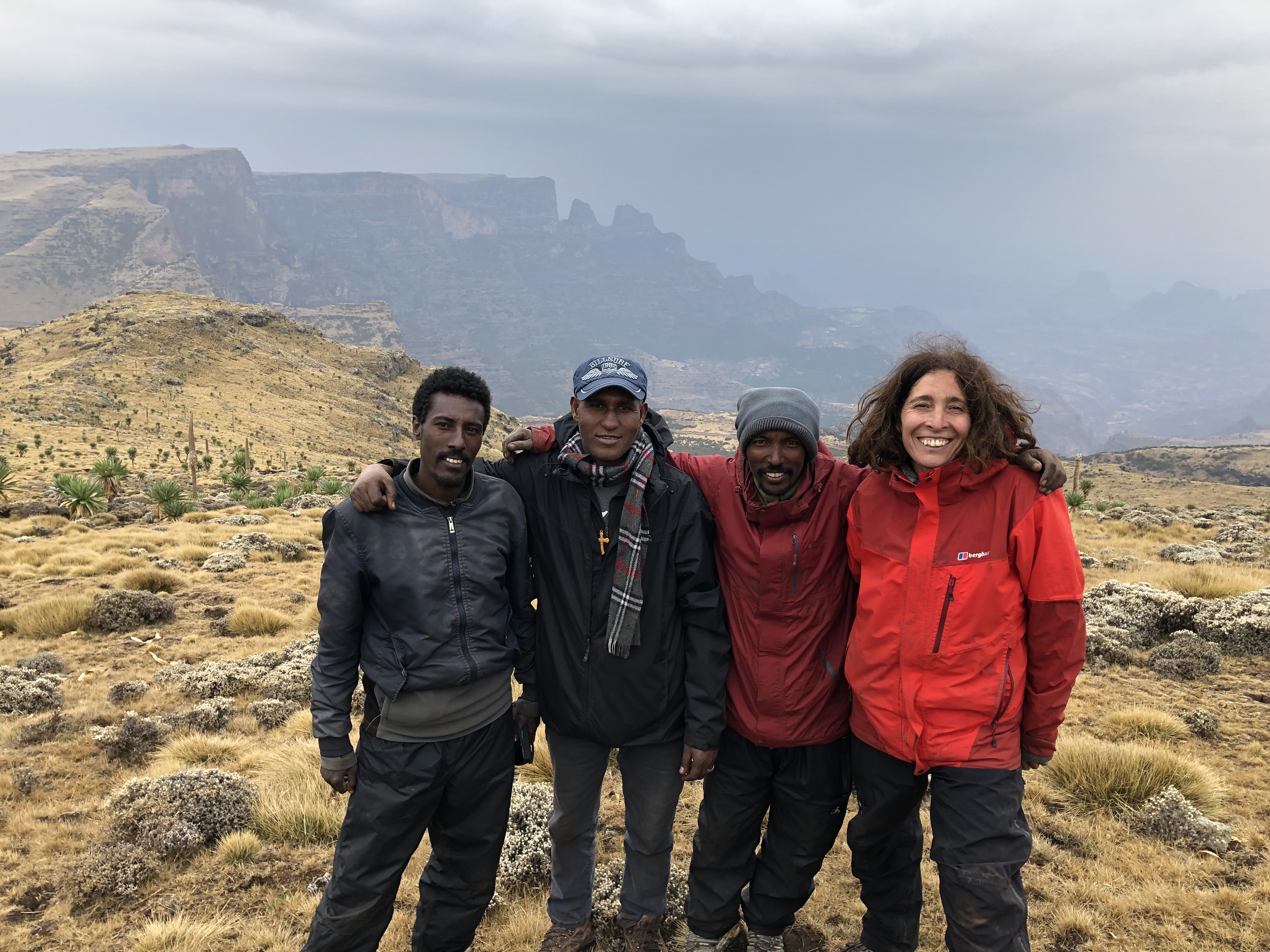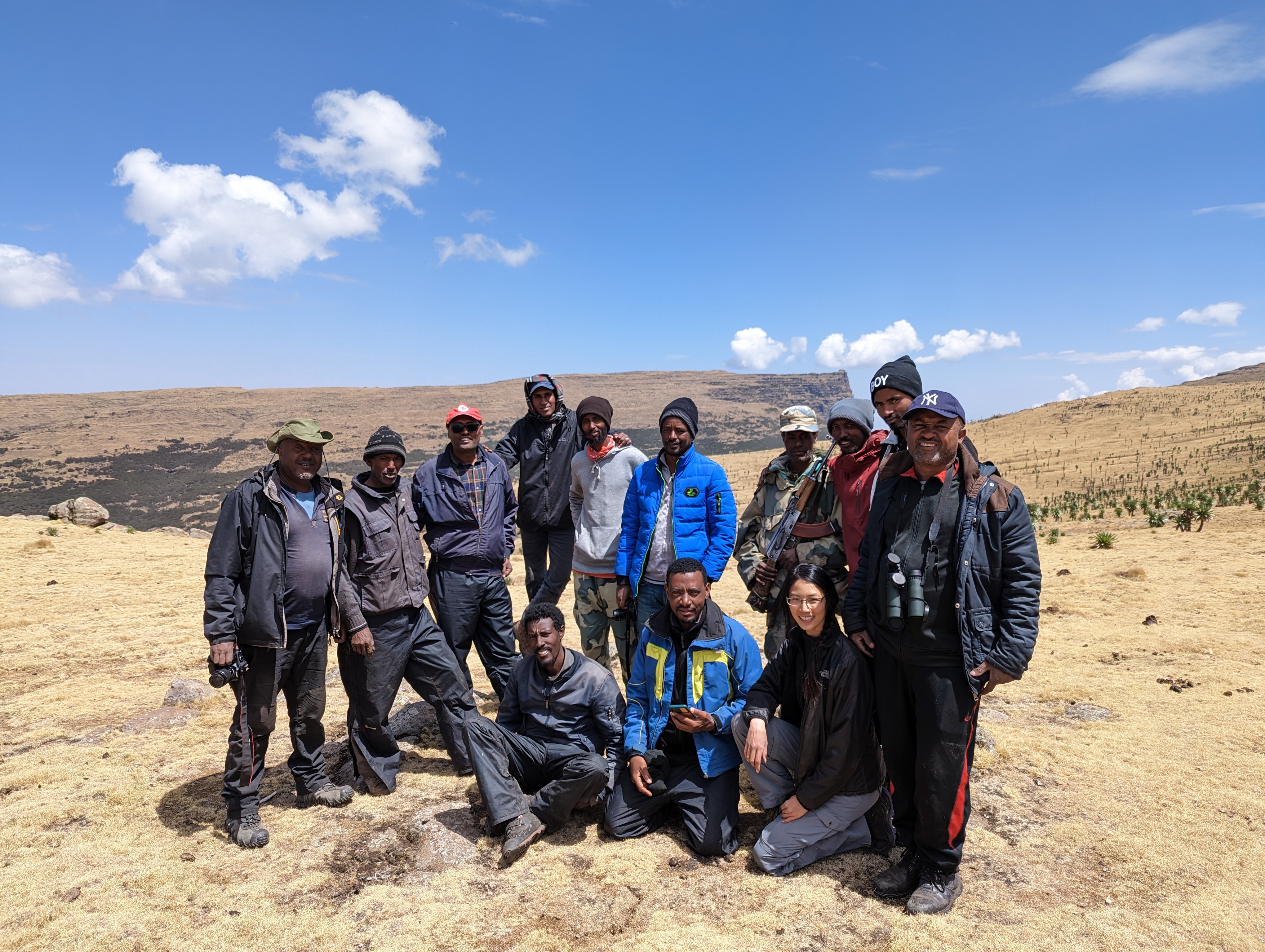

After Bale Mountains, the Simien Mountains host the second most important population of Ethiopian wolves. These rare animals are endemic to the Ethiopian Highlands, that is, they are found nowhere else in the world. The Simien Mountains, a World Heritage Site, is the inspiration behind their scientific name, Canis simensis – a species described in 1840 from a specimen collected there by German naturalist Eduard Rüppell. Compared to wolves in Bale, which are diurnal and relatively easy to find, Simien wolves are notoriously shy and difficult to observe. Reproduction is also not as good as in Bale: litter sizes are always small—seldom more than three pups—and several packs are not able to produce a litter each year. Wolf packs therefore remain small. In addition, some areas in Simien Mountains withstood many months of brutal fighting during the Tigray war until very recently. Recent research across the world have highlighted that human disturbance may shift animal activity to the night, with potential negative consequences on reproduction and survival. To address this question, after obtaining approval from the Ethiopian Wildlife Conservation Authority, EWCP launched in early March 2023 a GPS collaring study of Ethiopian wolves in Simien Mountains. This is the first time Ethiopian wolves are tracked after the first study conducted in 1988-1992 by Claudio in the southern slopes of Bale’ Sanetti Plateau using VHF collars.


GPS collars, which are now widely used to assess movements, behaviours and activity patterns in wildlife species, will allow us to answer critical research questions regarding the conservation of wolves in Simien: Are these wolves disturbed and stressed? Are wolves more nocturnal or crepuscular in Simien Mountains? Are they avoiding areas marked by human presence? What are the consequences of these behavioural changes?
To capture and collar wolves, a whole team gathered in Simien Mountains, joining EWCP’s Simien team (Getachew, Jejaw, Andualem) and Jorgelina, EWCP Science Director: EWCP’s Bale team (Alo, Muktar, Sandra), EWCP’s Amhara team (Girma, Fekadu), a vet from the Ethiopian Wildlife Conservation Authority (Abebayehu), as well as Abebaw, Wondimhunegn and Timhirit from the Simien Mountains National Park. Wolves were captured using ‘Soft-Catch’ traps, which have rubberised jaws and sensitive springs especially designed for safe live trapping. In order to fit a collar, a wolf needs to be anesthetised, which also gives us the opportunity to check its condition, vaccinate it, measure it and take biological samples.


The overall goal was to fit a Lotek LiteTrack Iridium 250 collar on one adult from each of the six focal packs monitored in Simien: Kechemo Buahit, Sebach Minch, Chenek, Ayenameda, Gich and Terefe. During this first collaring trip, we focused on the four first packs. Over one week, we captured six wolves and collared four of them (two females and two males), one from each focal pack. Over the coming months, Getachew and the monitors will be able to follow these wolves almost in real time, locate packs and monitor survival of adults and young. In around eight months time, the collars will drop off, allowing the retrieval of the data collected from an accelerometer integrated into the collar.
A second collaring trip will be planned for Gich and Terefe, two packs which territories are accessibe only by mules. We hope the new data obtained through these collars will help us understand wolf behaviour in areas where they are difficult to observe, thereby helping EWCP and its collaborators to identify threats and adapt conservation actions accordingly.